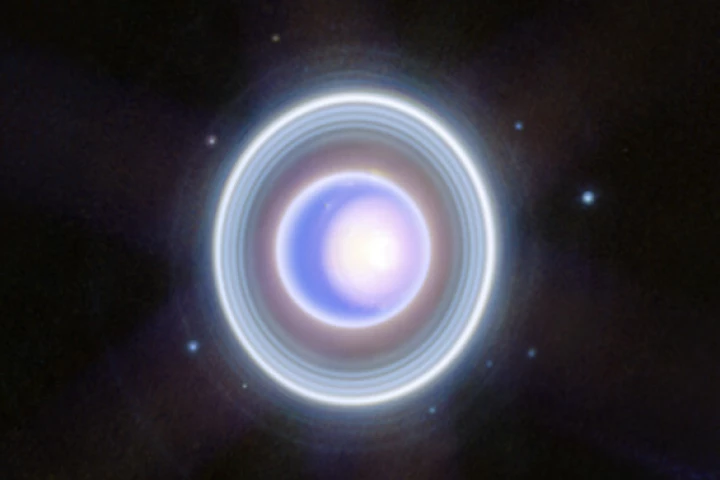Stars
-
Astronomers have mapped out half the universe in X-ray light, using a space telescope called eROSITA. The new map, which contains almost a million X-ray sources, is the basis of dozens of new scientific papers, with many more to come.
-
“Astronomers discover a completely unknown object floating around in space” is a common news theme, but it’s fun every time. The latest is a brand new type of star – ancient red giants the team has nicknamed “Old Smokers.”
-
Astronomers have discovered a neutron star orbiting a mysterious object that, by all accounts, shouldn’t be able to exist. Seemingly invisible in light, and too small to be a black hole, the object defies explanation.
-
Space is one of the most versatile and photogenic subjects, and this year was no different. From a sunrise captured by the International Space Station to the most distant star ever observed, here are some of the best space photographs taken in 2023.
-
Black holes are famous for gobbling up everything – but could they ever be swallowed whole? A new study suggests stars could capture very small black holes. There might even be a way to find them, and if so, they could help us understand dark matter.
-
You’d never notice one star in the galaxy that wasn’t from around here. Astronomers have now found that a star right near the supermassive black hole at the center of the Milky Way likely originated in a smaller galaxy that ours devoured.
-
Scientists have uncovered hints of a world of new elements beyond the periodic table. A new study has found that ancient stars may have been producing extremely heavy elements that remain unknown to science.
-
The James Webb Space Telescope may have been touted a successor to Hubble, but the old-timer still has some life left in it. These two iconic instruments have now teamed up to take a deep-field image of the colorful “Christmas Tree galaxy cluster.”
-
Move over TRAPPIST-1 – there’s an exciting new planetary system in town. Meet Kepler-385, home to seven Super-Earths that were just discovered in existing data.
-
As spooky season wraps, NASA has a final Halloween treat. Using two X-ray telescopes, astronomers have visualized the ‘bones’ in one of space's most haunting phenomena, the pulsar wind nebula MSH 15-52, also known as the ‘cosmic hand' or 'hand of God'.
-
Astronomers have detected one of the most energetic explosions in the history of the universe: a gamma ray burst from a neutron star collision. For the first time ever, heavy metals were detected in the explosion, totaling hundreds of Earths in mass.
-
NASA’s anticipated Roman Space Telescope is taking shape, and will soon measure light from a billion galaxies, perform a microlensing survey deep in the Milky Way, monitor hundreds of millions of stars and peer into unseen galactic neighborhoods.
Load More











